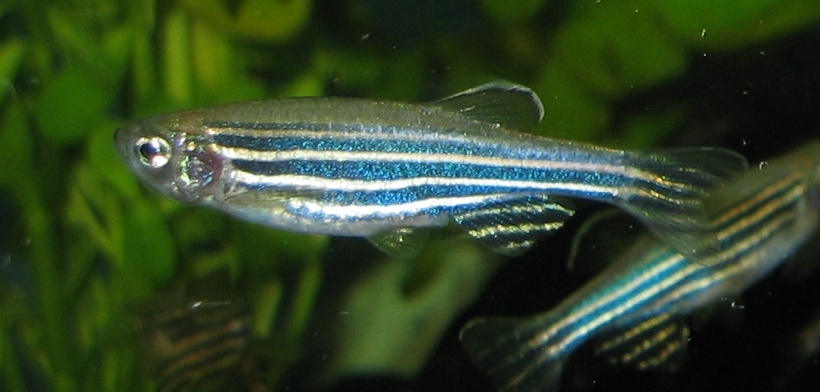
A novel experiment in gene-editing shows how limbs of Earth’s land-dwelling creatures may have evolved from their fishy ancestors.
From University of Chicago:
One of the great transformations required for the descendants of fish to become creatures that could walk on land was the replacement of long, elegant fin rays by fingers and toes. In the Aug. 17, 2016 issue of Nature, scientists from the University of Chicago show that the same cells that make fin rays in fish play a central role in forming the fingers and toes of four-legged creatures.
After three years of painstaking experiments using novel gene-editing techniques and sensitive fate mapping to label and track developing cells in fish, the researchers describe how the small flexible bones found at the ends of fins are related to fingers and toes, which are more suitable for life on land.
“When I first saw these results you could have knocked me over with a feather,” said the study’s senior author, Neil Shubin, PhD, the Robert R. Bensley Distinguished Service Professor of Organismal Biology and Anatomy at the University of Chicago. Shubin is an authority on the transition from fins to limbs.
…
The team focused on Hox genes, which control the body plan of a growing embryo along the head-to-tail, or shoulder-to-fingertip, axis. Many of these genes are crucial for limb development.
They studied the development of cells, beginning, in some experiments, soon after fertilization, and followed them as they became part of an adult fin. Previous work has shown that when Hox genes, specifically those related to the wrists and digits of mice (HoxD and HoxA), were deleted, the mice did not develop those structures. When Nakamura deleted those same genes in zebrafish, the long fins rays were greatly reduced.
“What matters is not what happens when you knock out a single gene but when you do it in combination,” Nakamura explained. “That’s where the magic happens.”
The researchers also used a high-energy CT scanner to see the minute structures within the adult zebrafish fin. These can be invisible, even to most traditional microscopes. The scans revealed that fish lacking certain genes lost fin rays, but the small bones made of cartilage fin increased in number.
The authors suspect that the mutants that Nakamura made caused cells to stop migrating from the base of the fin to their usual position near the tip. This inability to migrate meant that there were fewer cells to make fin rays, leaving more cells at the fin base to produce cartilage elements.
Read more here. A female specimen of a zebrafish (Danio rerio) breed with fantails. Courtesy: Wikipedia / Azul.
